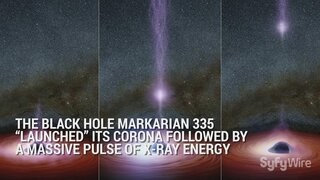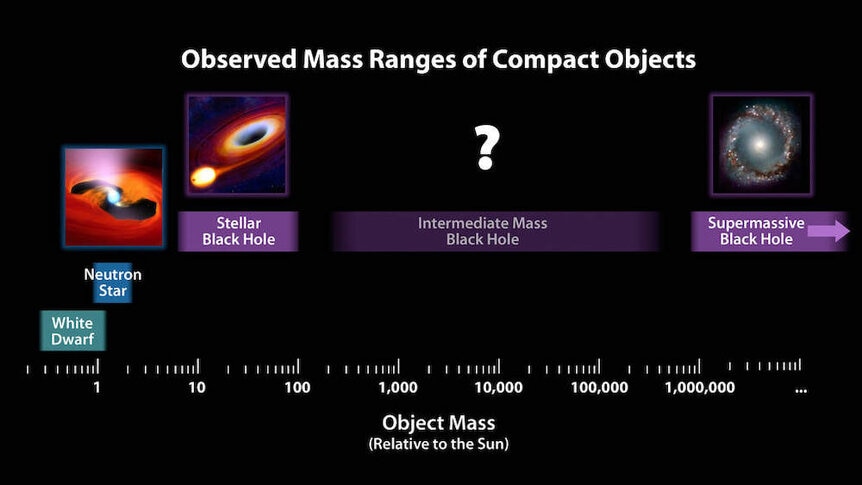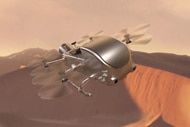Create a free profile to get unlimited access to exclusive videos, sweepstakes, and more!
New NASA Animation Shows Just How 'Big' Some Black Holes Can Be
They are mind-bendingly big.
In the 1960s, the United States and the then-Soviet Union were engaged in an all-out race for the Moon. The contest for supremacy in space was documented in the documentary The Space Race, streaming now on Peacock! The race for the Moon was undoubtedly the most extreme race in human history, with the longest track distance and the least friendly terrain possible. But cosmically speaking, it was less of a race and more of a quick step to our own front porch.
The scale of the cosmos is so overwhelming that our brains can’t rightly do it justice. You might know the definitions of a light-year, a parsec, or an astronomical unit, but there’s no intuitive way to get your head around what those distances really mean. The same is true of a planet, a nebula, or a black hole. A new NASA animation, showing just how "big" black holes can be, looks to help us make better sense of such scale.
The Size of a Black Hole
Talking about black holes in terms of size is inherently perilous, mostly because of gaps in language. We talk about things like size, when they don’t really apply, because we don’t have a better way to describe them. The true size of a black hole, even the “largest,” is impossibly small. That’s kind of their whole deal.
RELATED: This is What a Black Hole Sounds Like
Black holes occur only when a bunch of matter gets compressed to the point that it collapses under the weight of its own gravity. We usually think of black holes as incredibly massive things, the collected corpses of dead stars. That’s how they typically happen, but it isn’t strictly necessary. If you could squeeze an apple, a car, or a person down to about the size of an atomic nucleus, it would collapse into a low-mass black hole with an absurdly narrow event horizon. More massive black holes will have wider event horizons, but that doesn’t necessarily make them “larger.”
Even the most massive black holes are, in fact, quite small. Just singularities in space time which harbor so much mass they’ll happily swallow anything and everything that comes into grabbing distance. When we talk about the size of a black hole, what we’re really talking about is the diameter of its event horizon, and those can reach truly incredible sizes. The new video from NASA’s Goddard Space Flight Center explores the scale of known black holes by comparing them with other known objects in space.
The Scale of the Universe
NASA’s black hole scale animation starts big and only gets bigger. We open on the Sun, an object so large, you could fit 1.3 million of our planets in it and still have elbow room. From there, we zoom out to see J1601+3113, a black hole in the center of the J1601 dwarf galaxy. It’s about 100,000 times the mass of the Sun, but has an event horizon only about half the diameter of the Sun. Despite the absurd amount of material inside of it, J1601+3113 is pretty small, as black holes go.
RELATED: A supermassive black hole just turned toward Earth, firing its charged beam our way
As we continue zooming out, an outline of the solar system including planetary orbits appears and serves as a scale. Next on the roster is the black hole at the center of the Circinus galaxy, so large it could span the distance between the Earth and Venus. Soon, the whole of the solar system is almost too small to see, as we settle on the monster black hole TON 618, one of the most massive objects in the known universe.
It has a mass of 66 billion Suns, equivalent to about two-thirds of an entire galaxy. Fortunately, TON 618 is about 10 billion light-years away, where it can’t hurt us. And that’s a good thing. TON 618 has a diameter roughly 2,500 times the distance from the Earth to the Sun. If it had a mind, it could swallow our entire solar system without even pausing to chew.
Want more of the universe to explore? Catch The Ark, streaming now on Peacock!



















